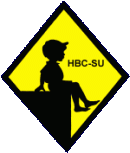
Notable changes in Australian school uniform occurred during the 1980s. Many changes more in tune with the Australian climate were introduced during the 1980s. Many casual styles replaced the more formal English styles. Blazers and ties became increasingly less common. More older boys began wearng long pants to school. Many schools introduced seasonal uniforms with long pants during the winter and shorts during the summer.
Notable changes in Australian school uniform occurred during the 1980s. Many changes more in tune with the Australian climate were introduced during the 1980s. Many casual styles replaced the more formal English styles. Blazers and ties became increasingly less common. More older boys began wearing long pants to school. Many schools introduced seasonal uniforms with long pants during the winter and shorts during the summer. Many schools dropped strict uniform requirements in the 1990s. School uniforms, hwever, are still widely worn. The formal traditional styles once worn have been repalced with more casual styles at many schools.
Elementary schools did not commnly require uniforms, except for catholic schools and private schools. Beginning in the 1980s an increasing number of state schools began requiring uniforms. Many of the uniforms institutes are simple casual uniforms. Uniforms are still commonly worn at Australian secondary schools. Some private schools still require quite formal uniforms. The public schools have a more relaxed attitude towards uniform, but one localmobservervsuggests that they are starting to revert back to something similar to the uniform styles from the 1960s and 70s
Many Australian schools made major educational changes (late-1860s) and 70s)> hey asre vasriously describes as 'progressive' or the kless enthusiastic might say 'radical' or 'Marxist'. The political and economic mileau favored school-based curricula, activity methods, and 'open' education. emerging from the economic rationalist, neo-liberal ideas because of a desire for shifting administrative responsibilities to the schools. We begin to see the term 'the entrepreneurial school'. The curriculum was centally controled. Wedo see interst in vocational training. Thesechanges were possible by a change in political control. Ministers for education, premiers, and prime ministers alomg with their political advisers decided policy, shifting controlaway from eduvatioal professionals. While these methods apealed to 'progrssive' mentality of the period. It soon bcame apparent that while ideological appealig, thy did not produce improved educational outcomes. The 1980s became a period of transition -- a reaction againdt the progressive reforms of the 70s. One education historian tells us, "A new senior executive level in Departments was staffed by politically-approved administrators. Neo-liberal education was enthusiastically adopted in New South Wales and at the Commonwealth level. Victoria soon joined in; Tasmania and Queensland lagged behind." 【Barcan】
Many Australian schools have destinctive summer and winter uniforms.
Related Links: Careful this will exit you from the Boys' Historical Clothing web site, but both sites are highly recommended
Apertures Press New Zealand E- books
Apertures Press British E- boosk:
Boys' Preparatory Schools: Lovely photographic essay of British preparatory schools with some over 200 color and black and white photographs depicting the schools during the 1980s
Related Chronolgy Pages in the Boys' Historical Web Site
[Main Chronology Page]
[The 1880s]
[The 1930s]
[The 1940s]
[The 1950s]
[The 1960s]
[The 1970s]
[The 1980s]
Related Style Pages in the Boys' Historical Web Site
[Main country page]
[Long pants suits]
[Short pants suits]
[Socks]
[Eton suits]
[Jacket and trousers]
[Blazer
[School sandals]
